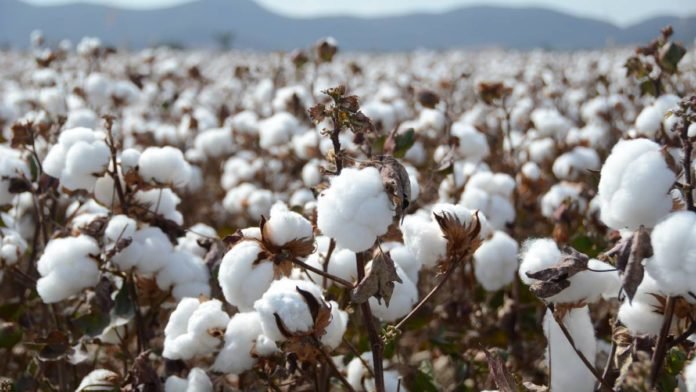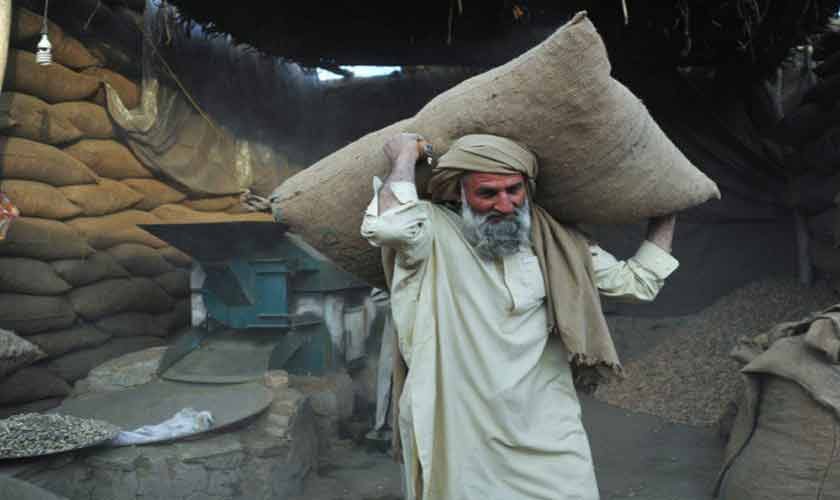Arsalan Naseer
The role of cotton in Pakistan’s economy is undeniably critical, bridging agriculture, industry, and employment sectors in a state of interdependence. As a foundational crop, cotton is not just a mere agricultural product; it represents the primary source of livelihood for millions of farmers across the country. The textile industry, thriving on cotton-derived products, commands a significant presence in the global market, making it a vital contributor to Pakistan’s export revenues and foreign exchange stability.
Moreover, the production of cotton is closely linked to other agricultural commodities, establishing a robust framework that ensures the overall stability and health of the national economy. Thus, enhancing cotton production and improving its quality emerge as paramount objectives for Pakistan’s economic health and agricultural sustainability.
To achieve these goals, several effective measures must be prioritized, one of which is the importance of early sowing. Research indicates that planting cotton in February and March can lead to substantially higher yields compared to seasonal or late-season sowing. Presently, approximately 6 million acres are designated for cotton cultivation in Pakistan. By utilizing a quarter of this land—around 15 lakh acres—farmers can achieve an average yield of up to 40 maunds per acre. Under ideal conditions, a farmer with 12 acres can plant cotton on 3 of those acres, potentially harvesting around 5 million maunds of cotton.
For the remaining 45 lakh acres, if farmers achieve an average yield of 18 maunds through seasonal sowing, the total yield could reach about 6.5 million maunds. Ideal nighttime temperatures in February and March, not falling below 16 degrees Celsius, are critical for nurturing cotton growth during the early phases. Lower temperatures could expose cotton plants to fungal attacks and other seedling diseases, risking substantial crop losses.
Moreover, there are considerable advantages to early sowing in terms of pest resistance. By establishing robust plants before significant pest threats arise, farmers can optimize both the quality and quantity of their cotton harvests, ultimately increasing their income. Cotton’s drought-resistant nature enhances its appeal, as it can be effectively grown in arid and semi-arid regions, utilizing water through its root systems rather than relying solely on soil moisture.
Regions like Cholistan and Thar could present excellent opportunities for cotton cultivation due to their favorable climates and soil conditions. Coastal areas of Baluchistan also harbor potential for productive cotton farming, yielding promising results even when water availability is limited. By extending cotton farming into these new regions, Pakistan could significantly ramp up overall production.
At the core of cotton revival lies the necessity of supplying farmers with certified, disease-free seeds. Currently, approximately 8 kilograms of high-quality seed is required per acre, translating to a national need of 45,000 tons. However, only a fraction—10%—of this demand is met through the Punjab Seed Council and public sector initiatives, while about 25% comes from private companies. Alarmingly, up to 65% of the cotton planted relies on unapproved and uncertified seeds, which diminishes yield and quality.
To effectively revive cotton farming, the use of 100% certified and disease-free seeds is essential. Introducing untested seed varieties endangers cotton health and productivity, highlighting the urgency for government intervention to ensure farmers are equipped with the best resources.
Making cotton cultivation economically attractive is also crucial. Currently, rising production costs have compelled farmers to shift towards alternative crops like sugarcane, maize, and rice. The disparity between the income from cotton and the expenses incurred in its production has contributed to a steady decline in cotton cultivation area. Policymakers must act swiftly to provide a support price for cotton; a minimum price of PKR 10,000 per maund is necessary for farmers to cover their costs while ensuring a reasonable profit margin. Until cotton becomes a profitable endeavor, expanding the cultivated area will remain a challenge.
The establishment of dedicated cotton zones, akin to practices implemented in the 1980s and 1990s when other crops were banned in cotton-rich areas, could bolster production. During that era, averting the cultivation of water-intensive crops—such as sugarcane and rice—within cotton zones safeguarded cotton growth from increased moisture-related pest issues.
Similarly, addressing the adverse impact of sugar mills located in cotton zones is crucial for enhancing production. The establishment of these sugar industries elevates moisture levels detrimental to cotton health, increasing pest pressures and reducing yield. Thus, a complete prohibition on sugar mills in cotton-growing regions might be necessary for restoring and preserving the cotton economy.
Advancements in agricultural technology, including mechanization, represent an invaluable asset for improving cotton cultivation. Employing machinery can significantly enhance productivity and production quality by streamlining farming processes, mitigating human errors, and minimizing labor shortages in areas such as harvesting.
Mechanization can also assist in pest and weed control, yielding healthier plants and improved overall results. Consequently, endorsing and implementing mechanization will align Pakistan’s cotton production with global standards and further elevate farmers’ incomes.
Moreover, forging public-private partnerships (PPP) can strengthen the cotton industry. Such collaborations would enable the government, alongside the private textile sector, to share knowledge on modern agricultural technologies, research methodologies, and marketing tactics. This synergy could equip farmers with access to improved seeds and machinery, while also facilitating better market pathways for cotton producers.
Creating a transparent market based on a grading system will incentivize cotton farmers to produce higher-quality cotton. Adopting international grading standards will boost the competitiveness of Pakistani cotton internationally, fostering economic stability within the cotton sector.
The menace of pests like whiteflies and pink bollworms continues to pose formidable challenges for cotton crops. Advancements in genetically modified (GMO) cotton technology offer promising solutions. By endowing cotton plants with pest-resistant properties, this innovation promotes plant health and increases yield potential.
In light of climate change, the development of climate-smart cotton varieties capable of enduring water scarcity and temperature extremes remains imperative. Investing in research and development will be critical for uncovering solutions that bolster cotton production stability and ensure farmers’ resilience against climate variability.
Overall, the compounding need for investment and collaboration among the government, private sector, and research institutions can’t be overstated. These measures will not only pave the way for a revival in cotton production but also uplift farmers’ livelihoods while strengthening Pakistan’s economy.















